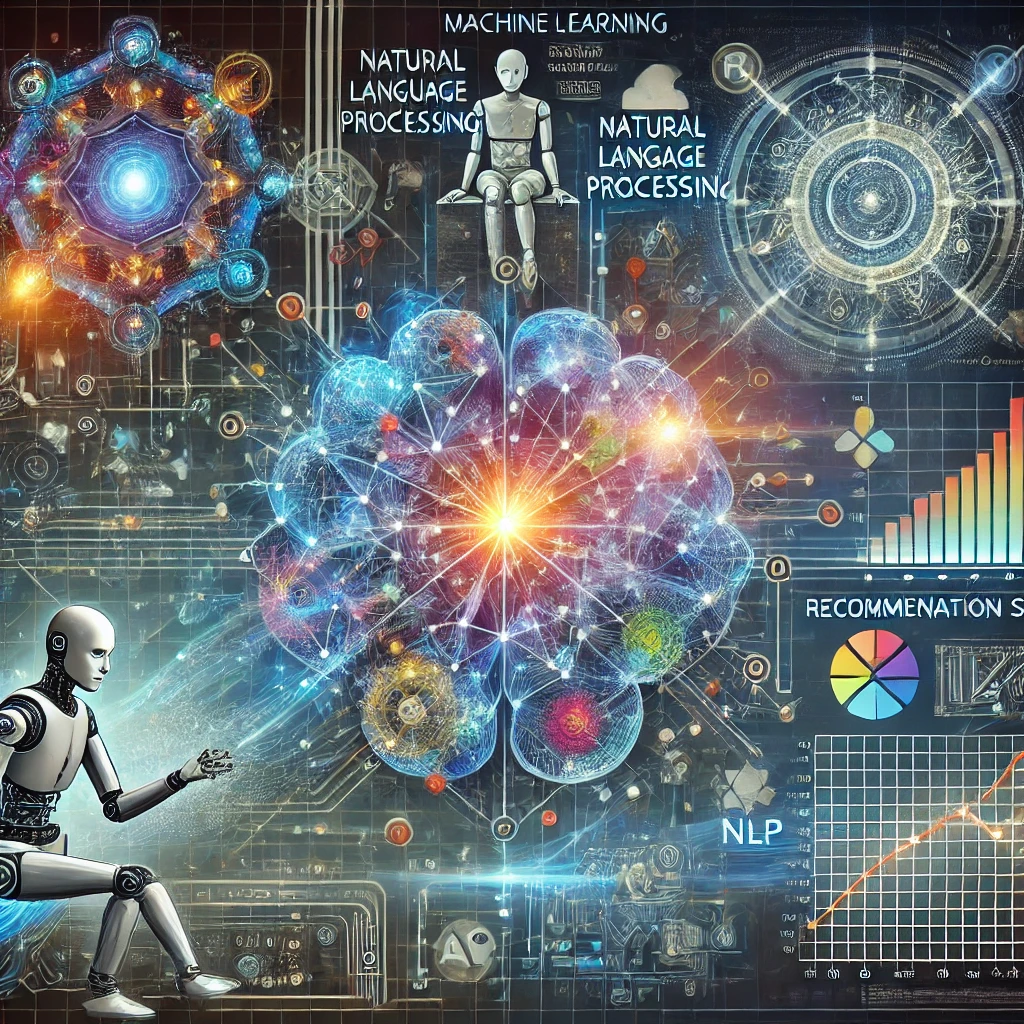- Machine Learning (ML) and Its Subtypes
Machine learning is a branch of AI that enables systems to learn from data and improve their performance without explicit programming. It is the cornerstone of most modern AI systems and is subdivided into the following:
Deep Learning
Artificial Intelligence (AI) has become an integral part of our lives, transforming industries and reshaping the way we interact with technology. Among the plethora of AI technologies, several core areas stand out: machine learning and its subtypes, natural language processing (NLP), recommendation systems, forecasting tools, and advancements in robotics. These technologies form the backbone of AI applications in the modern era. Let’s delve into each of them.
Deep learning is a specialized subset of ML that uses artificial neural networks with many layers (hence the term “deep”) to model complex patterns in data. Applications of deep learning include:
Image recognition (used in facial recognition systems).
Speech recognition (powering virtual assistants like Siri and Alexa).
Autonomous vehicles (analyzing sensor data to navigate environments).
Neural Networks
Neural networks mimic the structure of the human brain, with nodes (neurons) organized into layers. They are trained using large datasets to recognize patterns and make predictions.
For example:
Feedforward neural networks are used for straightforward tasks like image classification.
Recurrent neural networks (RNNs) are suited for sequential data, such as time-series forecasting or language modeling.
Convolutional neural networks (CNNs) specialize in visual tasks like object detection in images.
- Natural Language Processing (NLP)
NLP focuses on the interaction between computers and human language, enabling machines to understand, interpret, and generate text or speech. This field is pivotal in:
Text analysis: Sentiment analysis to gauge customer opinions.
Language translation: Tools like Google Translate.
Chatbots and virtual assistants: Automating customer support or providing personal assistance (e.g., ChatGPT).
Content generation: AI tools creating articles, summaries, or even creative writing.
NLP has grown immensely with the advent of large language models (LLMs) like GPT, which use vast datasets to achieve nuanced understanding and generation of text.
- Recommendation Systems and Forecasting
Recommendation systems personalize user experiences by analyzing preferences and predicting future actions. These systems play a crucial role in various industries:
E-commerce: Suggesting products based on browsing history (e.g., Amazon).
Streaming platforms: Recommending shows and movies (e.g., Netflix, YouTube).
Social media: Curating feeds and suggesting friends or connections.
Forecasting tools, often based on similar AI principles, predict future trends by analyzing historical data. They are instrumental in:
Stock market analysis.
Demand planning in supply chains.
Weather forecasting.
These technologies leverage algorithms like collaborative filtering and matrix factorization, ensuring more accurate and personalized outputs.
- Development of Robotics
Robotics, a physical manifestation of AI, integrates intelligent systems into machines to perform tasks that usually require human effort. Robotics is advancing through:
Industrial robots: Automating repetitive tasks in manufacturing.
Service robots: Assisting in healthcare (e.g., surgical robots), hospitality, and logistics.
Autonomous robots: Navigating environments independently, such as drones or self-driving cars.
Humanoid robots: Designed to mimic human behaviors for research, interaction, or assistance (e.g., ASIMO).
The convergence of robotics with machine learning allows robots to learn from their environments, adapt to new scenarios, and improve their efficiency over time.
Conclusion
The rapid evolution of these AI technologies is driving unprecedented innovation across industries. Machine learning, NLP, recommendation systems, and robotics are not just transforming how businesses operate but are also enhancing the way we live and interact with the world. As AI continues to advance, its applications are set to become even more integral to solving global challenges and improving everyday life.

